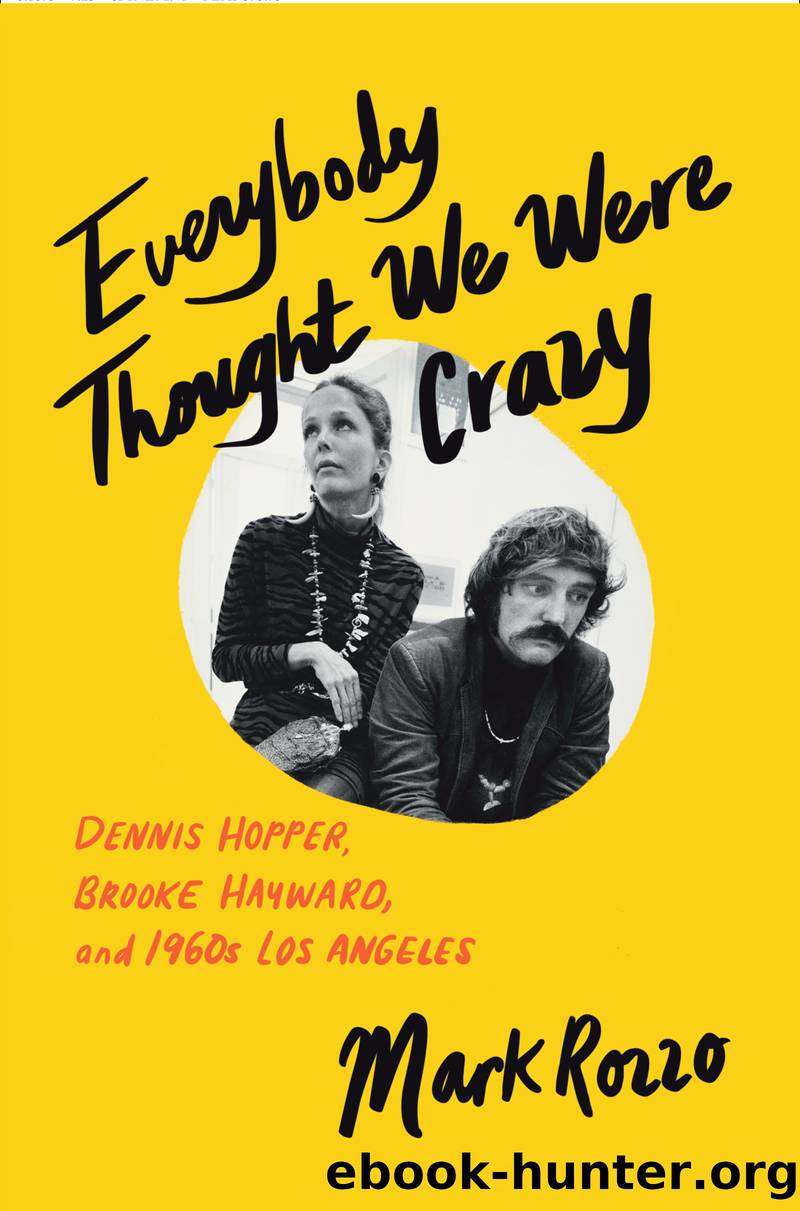Everybody Thought We Were Crazy by Mark Rozzo

Author:Mark Rozzo
Language: eng
Format: epub
Publisher: HarperCollins
Published: 2022-03-19T00:00:00+00:00
AT THE BEGINNING OF MARCH, the B-movie specialists American International Pictures released Curtis Harringtonâs sci-fi horror film Queen of Blood, starring John Saxon and Basil Rathbone, with Dennis in the role of astronaut Paul Brant. Harrington described the production: âI devised a tale in which the queen of the aliensâbrought back to earth by a group of American astronautsâis a vampire creature who seeks a new food source for her dying planet. The food source, as it turns out, is the human race.â Dennis, as Saxon recalled, âwas trying very hard to keep a straight face throughout.â It was perhaps even more absurd than The Yin and the Yang. Even so, as with Night Tide, Harrington had managed to inject a bit of art into a throwaway film. It was another filmmaking lesson that Dennis would remember.
A few days after Queen of Blood came out, Dennis popped around to RCAâs recording studios on Sunset Boulevard across from the Cinerama Dome movie theater, to meet up with Brian Jones of the Rolling Stones. He brought his Nikon, and in the resulting photographs, Jonesâin his paisley shirt, white vest, and flowing scarfâpulls faces and laughs, making it clear that he and Dennis have a rapport. Jones then proceeded to sit cross-legged on the floor of the studio and play a long-necked Indian stringed instrumentâthe sitar. The occasion was likely an overdubbing session for âPaint It Black,â the Stonesâ most adventurous song yet, thanks to the aural exotica that the multi-instrumental Jones brought to it. (The bandâs bass player, Bill Wyman, said Jones had written the songâs Middle Easternâinflected melody, uncredited.) In about six months, the Indian influence had traveled from Benedict Canyon, where the Byrds and the Beatles had tripped while listening to Ravi Shankar, back to London, where the Beatles recorded the sitar-laced âNorwegian Woodâ at Abbey Road in October, and now back to Los Angeles, where Dennis documented a landmark rock moment at RCA.
March 1966 was an incredible month for Dennis to be making the rounds of LAâs recording studios, much as heâd made the rounds of artistsâ studios for years. He and Brooke had been fascinated when art had gone pop; now pop was going art. On March 7, Capitol released a teaser single from the forthcoming Beach Boys album, Pet Sounds. The song was âCaroline, Noââbeguiling, achy, hypnotic, with an unlikely instrumental palette that included an echoey rhythm tapped out on a Sparkletts water-cooler jug. That the single was credited solely to Brian Wilson, to whom the label âgeniusâ attached itself around this time, suggested that the auteurship Dennis had been seeking in Hollywood was manifesting itself in Los Angeles music making.
The city was looking like the center of the pop universe, a phenomenon brought home on March 14, when the Byrds released âEight Miles High,â a paradigm shifter of a 45 that managed to get itself banned because of its putative druggy subject matter. It was actually a chronicle of the Byrdsâ tour of England the previous year; even so, it emitted copious signals about expansion on all fronts.
Download
This site does not store any files on its server. We only index and link to content provided by other sites. Please contact the content providers to delete copyright contents if any and email us, we'll remove relevant links or contents immediately.
Kathy Andrews Collection by Kathy Andrews(11730)
The remains of the day by Kazuo Ishiguro(8823)
Paper Towns by Green John(5091)
Spare by Prince Harry The Duke of Sussex(5072)
Industrial Automation from Scratch: A hands-on guide to using sensors, actuators, PLCs, HMIs, and SCADA to automate industrial processes by Olushola Akande(4983)
The Body: A Guide for Occupants by Bill Bryson(4974)
Machine Learning at Scale with H2O by Gregory Keys | David Whiting(4183)
Be in a Treehouse by Pete Nelson(3948)
Never by Ken Follett(3793)
Harry Potter and the Goblet Of Fire by J.K. Rowling(3775)
Goodbye Paradise(3728)
Into Thin Air by Jon Krakauer(3313)
The Remains of the Day by Kazuo Ishiguro(3294)
The Cellar by Natasha Preston(3262)
The Genius of Japanese Carpentry by Azby Brown(3226)
Fairy Tale by Stephen King(3220)
120 Days of Sodom by Marquis de Sade(3182)
The Man Who Died Twice by Richard Osman(2997)
Drawing Shortcuts: Developing Quick Drawing Skills Using Today's Technology by Leggitt Jim(2996)
